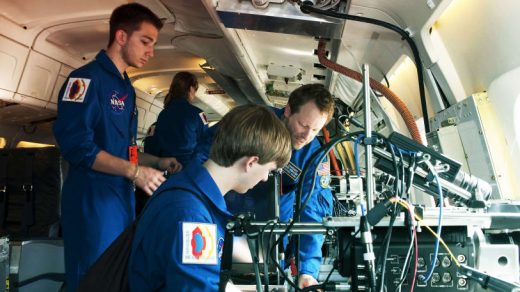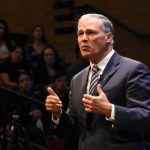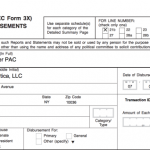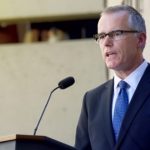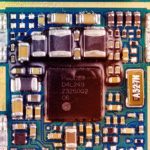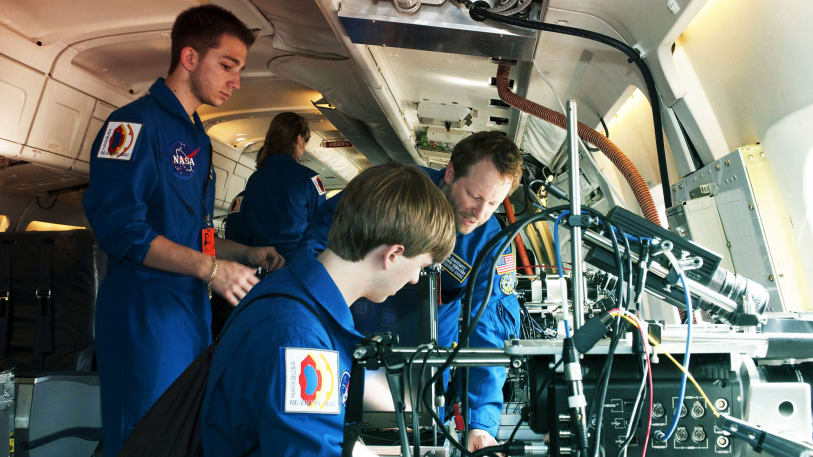How Trump’s Budget Cuts Will Affect STEM Education For Low- To Middle-Income Families
President Donald Trump’s proposed budget increases one of the nation’s largest expenditures, the military, while cutting funding to many smaller programs such as the National Endowment for the Arts (NEA), have little impact on overall government spending. The 2016 budget for the NEA was $148 million. By comparison, the proposed budget increase (not total spending) for the military in the president’s budget is $54 billion.
Another program that has seen its budget slashed: NASA. The majority of space science and space-focused missions escaped without deep cuts. The Earth-science-focused programs, however, are facing a 5% budget cut. Climate change is the clear loser; almost all the cuts specifically target climate change research and exploration. That’s not surprising; Trump’s administration has spoken openly about its disbelief in climate change, despite compelling evidence to the contrary.
However, space is a different story. It’s become clear that the president sees NASA’s space-related activities as a possible feather in his cap. Last month, NASA acting director Robert Lightfoot announced that the administration had directed NASA to study the feasibility of putting astronauts aboard their new SLS rocket’s test flight around the moon. By asking NASA to accelerate its schedule for human space flight and send Americans on a circumlunar mission during Trump’s first term, it’s clear that the president sees NASA as a part of vision for the U.S.
But in his budget, Trump proposes eliminating the NASA Education Office entirely. The NASA Education Office consists of K–12 education outreach, scholarships, fellowships, grants, and more. In essence, it trains the next generation of scientists, engineers, educators, and astronauts. Does cutting this office, which the administration sees as redundant, actually hurt Trump’s goals for NASA?
Gene Gordon is a New York high school physics teacher who has worked closely with NASA’s Education Office for years. He has been a NASA fellow and has been invited to various NASA events and launches, all of which he’s shared with his students. “I was live broadcasting the Orion launch back [in December 2014] to all the schools, K–12 in all our districts, and also in other districts. People in the local area started following me and wanted to have their students connect up and ask questions. It really blossomed over the past 10 years into this passion in the area about everything NASA and the space program.”
STEM education is increasingly important, but Gordon makes clear that this isn’t just about science and math. “It’s using one passion to ignite an overall passion about good work ethics and what you need to survive in this world. NASA’s always been about combining things,” Gordon says. “These programs are giving them life skills and skills to succeed in their careers and in their futures, even if they don’t go into a STEM field.”
It’s not just teachers who feel strongly about the NASA Education Office. Emily Calandrelli, host of the TV show Xploration Outer Space and a field correspondent for the upcoming Bill Nye Saves the World, also has a strong belief in the importance of NASA education outreach. Growing up in West Virginia, Calandrelli was the first in her family to pursue a STEM career. She credits her success to the NASA Space Grant Office, which exists in each state to educate students about STEM opportunities.
“I simply wouldn’t be where I am without [NASA Space Grants]—and they couldn’t exist without NASA education funds,” Calandrelli says.
These grants were also vital to learning how to operate in the professional world. “The West Virginia NASA Space Grant took me under their wing and taught me everything about applying for internships, scholarships, and performing research at the undergraduate level,” she says.
Just as important, though, Calandrelli’s NASA Space Grant ensured she didn’t feel alone as a woman in a male-dominated field. They introduced her to other young women in STEM facing similar challenges.
Eliminating funding for the NASA Education Office, and these grants as a result, would have serious consequences for students in lower-income areas. “Cutting NASA education funds would most severely affect students from low- to middle-income families and students from non-Ivy League-level schools,” Calandrelli continues.
If NASA’s space exploration activities are indeed a point of pride for the Trump administration, then the administration should be increasing funding for the NASA Education Office. Cutting its programs and funding entirely is shortsighted at best. At worst, it’s disastrous for the future of NASA.
“Not now, not in two years, not in three years—in five to 10 years, there’s going to be a decrease in the number of students going into STEM fields, but also people going into other fields who have a passion. It’s only through having people that have a passion that places like NASA grow. We would not have gotten to the Moon without passion. All that money creates this future set of engineers, future sets of artists, future sets of businesspeople that all have a passion for getting us to the next place. We want to go to Mars? We have to put money into kids now,” Gordon says.
Swapna Krishna is a space science and tech writer with a weekly column at Paste Magazine. You can find her on Twitter @skrishna.
Fast Company , Read Full Story
(88)

